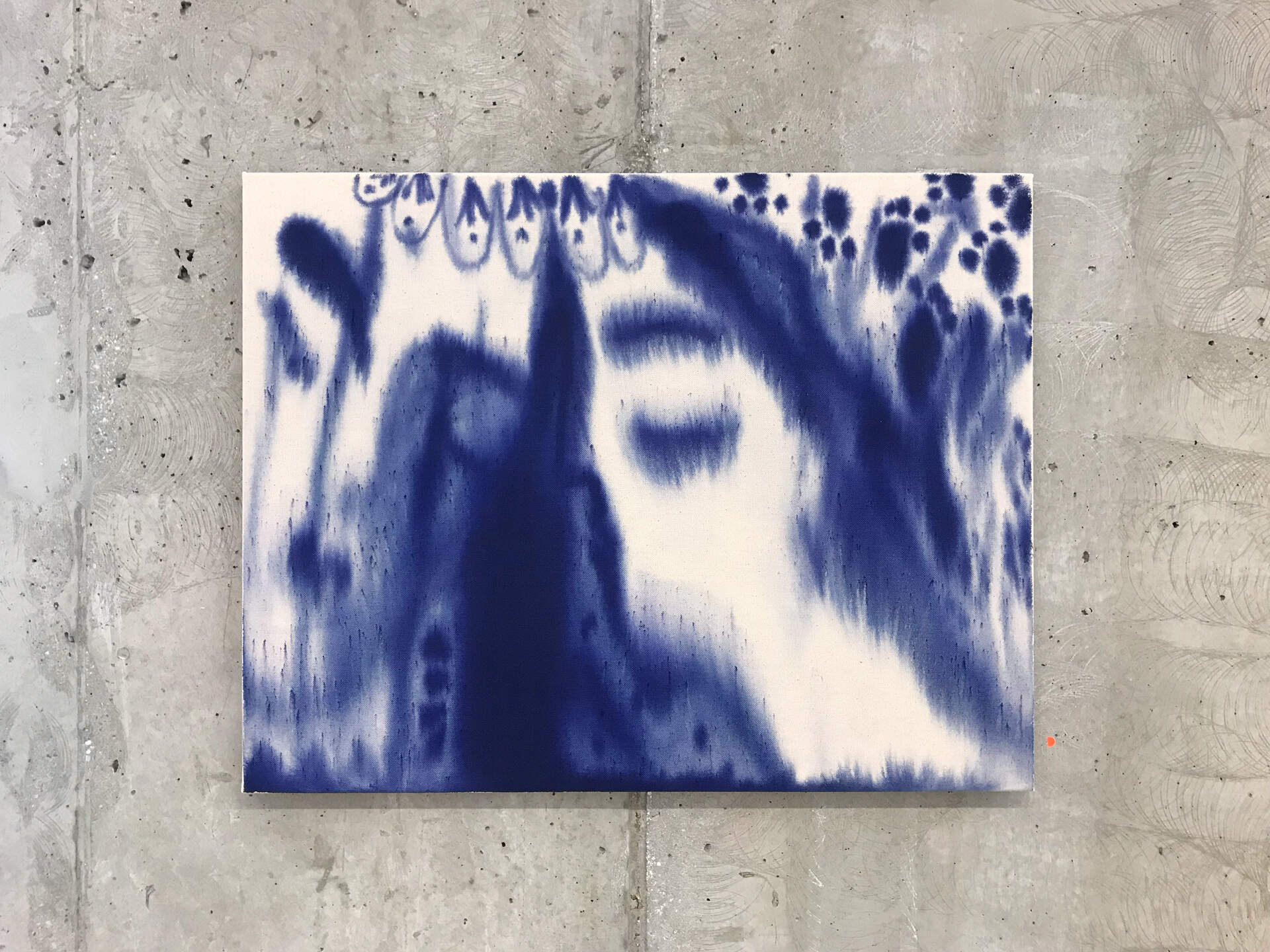-

Final exhibition Düsseldorf Art Academy, 2018 -

Blaues Bild I 200 x 290 cm _ Indigo on cotton fabric, 2017 -

“Planet 58” art collection NRW K21 Ständehaus, Düsseldorf, 2019 © Achim Kukulies -

“INDIGO” BRAUN-FALCO Gallery Munich, 2019 -

“INDIGO” BRAUN-FALCO Gallery Munich, 2019 -

Sommer 48 x 62 cm _ Indigo on cotton fabric, 2019 -

“INDIGO” BRAUN-FALCO Gallery Munich, 2019 -

“LET US IN with the bag full of dust.” Worringer Platz / Düsseldorf, 2019 © Kurt Heuvens -

“Oh Baby” Düsseldorf, 2020 -

“Oh Baby” Düsseldorf, 2020 -

“Oh Baby” Düsseldorf, 2020 -

Final exhibition Düsseldorf Art Academy, 2018
“The things we create should be self-sufficient […].” Theodor Däubler, 1916
Katharina Stangler’s paintings are entities whose existence extend beyond the object-based portrayal of subjects. In her artistic process, the artist opens a dialogue between the chosen materials and herself: the cotton fabric, combined with water, creates a painting surface that determines the composition in co-creation with the artist. The pigment, which is applied by the artist in a graphic style, sinks into the fabric through osmotic processes and then splits – or “blooms” – into individual color components.
Katharina Stangler’s work cannot be called “coincidental” or “accidental”, for the artist herself admits that the process is a deliberate one. It is the artist’s concession of agency towards material and technique – from which the artist as an agent herself emerges long before the work is completed. It’s this form of self-sufficiency and agency which Theodor Däubler had found in the early 20th century Expressionism and which can be experienced in the works of Katharina Stangler today. The paintings reach out to connect with the viewer through their materiality, beyond the artistic process.
Lutz H. Bastian-Wirtz (M. A.)












